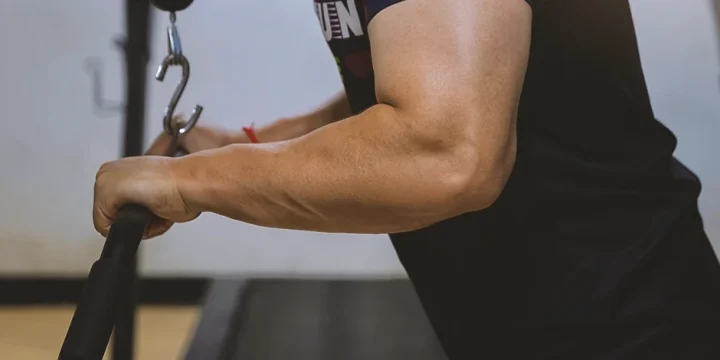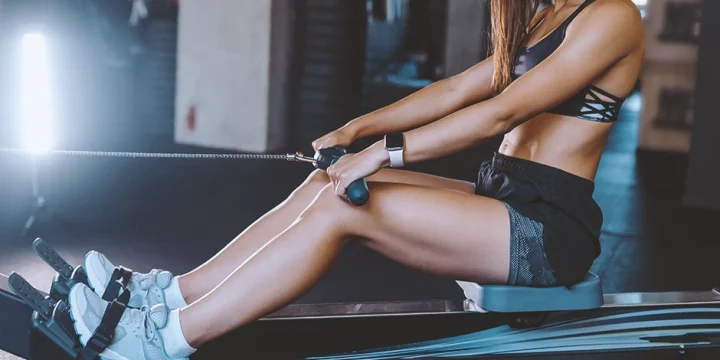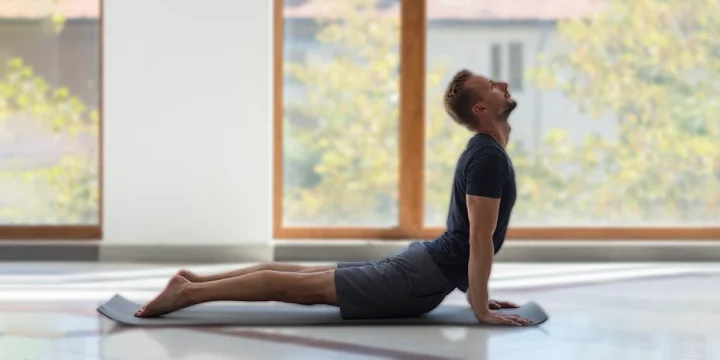Developing more muscle strength in your back is just as achievable with cable back exercises as it is with using free weights. With small adjustments to the cable machine and your grip you can easily switch between compound and isolation exercises.
But for some reason, many bodybuilders shy away from cable exercises.
As a personal trainer, I have helped many clients shape their lower and upper back with a set of cable exercises that are suitable for beginners and pros.
Let me show what's involved.
Quick Summary
- The best cable workouts for a bigger back are seated cable rows, face pulls, close grip lat pulldowns, reverse cable flyes, cable twisting rows, and straight arm pulldowns.
- Engaging in cable workouts works on both the primary and secondary muscles in the back, upper body, and shoulders.
- According to a study from Sports, working with 8–12 reps of 60–80% of your 1RM is ideal for muscle hypertrophy.
- Consider training twice a week and engaging in different cable workouts for maximum results.
8 Cable Back Workout Exercises
Here are my tried and tested exercises for your lower and upper back muscles.
1. Seated Cable Row
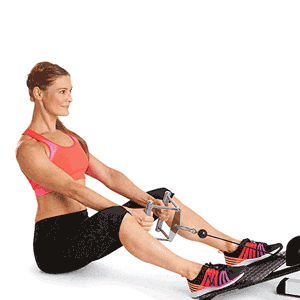
Most gyms will have a seated cable machine, and the setup is simple:
- Get into a seated position with your knees bent at about a right angle.
- Grip the handles and get some tension on the cable.
- Start the seated cable row with a slow movement, pulling your hands to your chest.
- Squeeze your shoulder blades together and then release them, going back to the starting point.
2. Face Pulls
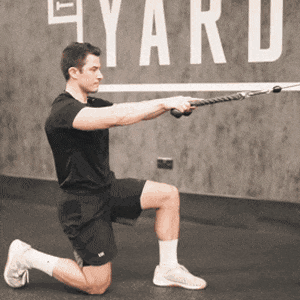
Here's how you do this exercise with good form:
- Set up the machine with a cable rope attachment at head height.
- Your starting position is with your arms straight in front of your face and some tension on the cable.
- Slowly pull the ropes towards your face until they almost touch your nose.
- You'll feel the tension in your upper back and rotator cuff muscles.
- Slowly release your hands back to the starting point.
3. Close Grip Lat Pulldown
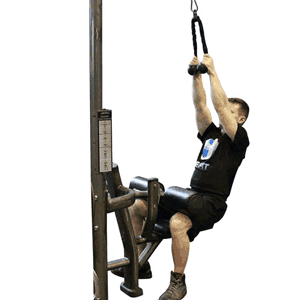
The close grip lat pulldown is my personal favorite, and I recommend going slow rather than heavy.
Here's how you do this exercise with good form:
- Set the cable machine up so that your hands can just about reach the pulldown bar.
- Keep your hands close together with palms facing away from you.
- Pull the bar down as far as your chest and release it back slowly.
- If you do a reverse grip lat pulldown, you can target secondary muscles like your biceps.
4. Wide-Grip Lat Pulldown
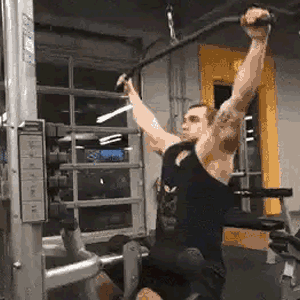
My clients love wide-grip lat pulldowns because they are a great compound exercise.
Here's how you do this exercise with good form:
- Set up the machine so your hands can reach the lat pulldown bar.
- Grip the bar with your hands more than shoulder-width apart.
- Slowly pull the bar down to your chest and release it back up again.
- Make sure your thighs are secure under the seat frame as heavy loads approaching your body weight could lift you off the seat.
5. Reverse Cable Flyes

This is another excellent compound exercise where cable machines can create excellent tension on the primary muscles.
Here's how you do this exercise with good form:
- Your starting position is with the cables set up at chest height and both hands gripping a handle.
- With your hands straight in front of you, step back a bit to add some tension.
- Slowly pull each hand back while keeping your arms straight.
- Release back to the starting point slowly.
6. One-Arm Cable Pulls
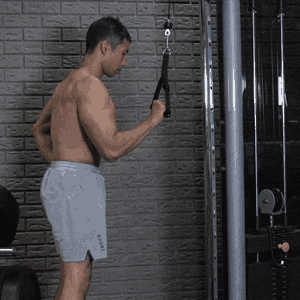
I recommend not doing this as a seated cable row and opting for the standing setup instead.
Here's how you do this exercise with good form:
- Set yourself up with the cable at about chest level and bend your body forward.
- Reach for the cable and make sure there is tension on it with your arm fully extended.
- Start the movement slowly and pull the handle all the way to your chest.
- Release back slowly to keep more continuous tension.
7. Cable Twisting Rows
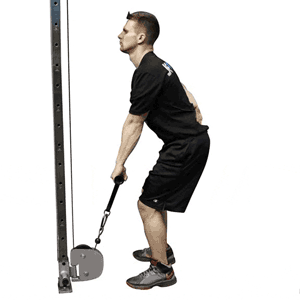
This is a variation of the single-arm cable row above.
Here's how you do this exercise with good form:
- Set up for a standing cable row with the handle chest high.
- Take a runner's stance with your left foot forward and grip the handle with your left hand.
- Pull the handle towards your chest and rotate your torso to activate secondary muscles in your arms and pecs.
Also Read: Best Cable Exercises for Triceps
8. Straight Arm Pulldowns
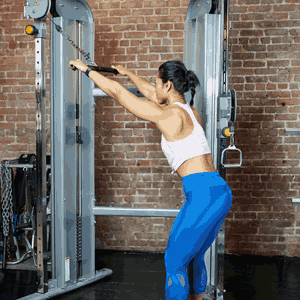
And finally, here's another one of my favorite compound cable back exercises.
Here's how you do this exercise with good form:
- Stand at the cable machine with the lat pulldown bar set up to the highest levels.
- Grip it with your hands shoulder-width apart and above your head.
- Slowly pull it down while keeping your arms perfectly straight.
- Once you get to just below your pecs, release the bar back up again.
Is The Cable Machine Good For Back Workouts?
Yes, it is an excellent way to work on the primary and secondary muscles in your back, shoulders, and upper body. To target your back muscles effectively, incorporate exercises like the single arm cable row, straight bar pulldown, and straight arm pulldown, which engage the shoulder blades and provide a full range of motion.
With some simple variations in the machine setup and by slightly changing your grip and body position, you can easily switch between isolation and compound exercises.
The other advantage is that cable exercises allow you to keep constant tension with more control than you would have with weights.
"The machines typically take your body through the range of motion—from the starting point through to the endpoint, a machine will take you through the same line of motion with each and every repetition."
- Rachel Lapidos, Beauty & Fitness Editor at WellAndGood.com
Other Cable Back Workout Tips

In addition to choosing the right cable back exercises, you also need to consider these tips.
1. Reps And Sets
I generally suggest you do three sets of each workout, no matter whether you're toning, bulking, or trying to lose weight. It's the weight load and reps that then dictate your results.
According to a study from Sports, working with 8–12 reps of 60–80% of your 1RM is ideal for muscle hypertrophy [1].
2. Training Frequency
This will depend on how much attention you need to pay on your back. If the rest of your body has grown out of proportion, then aim for twice-a-week back muscle days. This is enough to add the right amount of strain while still giving your muscles time to recover and rebuild.
3. Training Variation
This is a very important part of what I recommend to readers and clients. Don't fall into the trap of doing the same exercises every week. Instead, pick 3 of the above and add them to your back and shoulder days, and switch them around to not get bored with them.
According to a study on PubMed, this will also help to avoid muscle adaptation, which can happen when you always do the same routine [2]. The result is that your muscles get used to the same movements and don’t respond with the same level of recovery and rebuilding.
Related Articles:
Revolutionizing Posture Correction with Cable Back Workouts
Many of my clients come to the gym from their desk-bound jobs, which I believe is the leading cause of posture-related issues. Cable back workouts offer a unique and effective solution to combat these problems.
Here's how incorporating cable exercises can lead to significant improvements in posture.
1. Understanding Posture and Its Importance
Good posture involves the alignment of the body so that the least strain is placed on muscles and ligaments during movement or weight-bearing activities. It's crucial for reducing the risk of injury and chronic pain, particularly in the back and neck areas.
Prolonged sitting and poor ergonomic practices can lead to a forward head posture, rounded shoulders, and an overall weakened back, contributing to discomfort and potential long-term health issues.
2. Targeting Key Muscle Groups with Cable Exercises
Exercises like cable face pulls and high rows target the trapezius, rhomboids, and rear deltoids. Strengthening these muscles helps counteract the forward shoulder roll and neck protrusion commonly seen in poor posture.
Cable exercises like straight-arm pushdowns and low rows strengthen the erector spinae and latissimus dorsi. These muscles support the lower back, crucial for maintaining an upright posture.
3. Cable Workouts for Balanced Muscle Development
Cable machines allow for unilateral exercises, which can address and correct muscle imbalances. This is vital for posture, as imbalances often lead to or exacerbate postural issues.
The adjustable resistance and controlled movement path of cable machines makes them ideal for safely strengthening back muscles without overloading the spine.
4. Incorporating Posture-Focused Cable Workouts into Daily Routine
A balanced routine that targets all the major muscle groups of the back, with a focus on the upper back, can be performed 2–3 times a week.
Start with lighter weights to focus on form and gradually increase resistance as strength improves. Consistency is key to seeing posture improvements.
FAQs
Can You Do All Your Back Workouts with a Cable Machine?
Yes, you can do all your back workouts with a cable machine. These machines have hundreds of different configurations to choose from that allow you to either isolate muscles or focus on compound exercises. For building muscle mass in your back, incorporate the best cable back exercises such as cable rows and cable machine exercises with a rope attachment, targeting the upper arms and providing effective cable back workouts.
Are Cable Machines Safe for Back Workouts?
Yes, cable machines are safe for back workouts. In many ways, you could argue that they are safer than free weights and lead to fewer injuries [7]. With the weight safely contained in the frame, you won't have to worry about dropping a heavy load.
References:
- https://www.ncbi.nlm.nih.gov/pmc/articles/PMC7927075/
- https://pubmed.ncbi.nlm.nih.gov/12436270/
About The Author
You May Also Like

